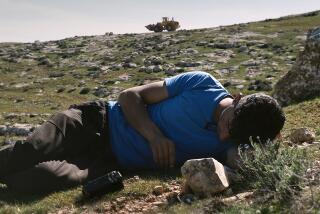A case for taking new paths in life, Hollywood
My nephew contacted me recently to ask what cross-country route I thought he should take. He’s driving from the East Coast to attend the American Film Institute in L.A.
My first concern was making sure he took a route that was safe, reasonably well populated and adorned with more than a few fascinating towns, cities and highlights along the way. I enjoy driving across the United States and have done it many times, so the roads are familiar to me. When I go “cross-country,” I like to think of it as “cross-town,” with stops along the way to check in on the many people I’ve come to know, and who have blessed me with a firm grasp of the teeming and vital expanse between the two overly publicized coasts.
For my nephew, I suggested the route through New Jersey to Virginia to Tennessee to Arkansas to Texas to New Mexico to Arizona and finally to Southern California. It’s direct but not strictly utilitarian and traverses some great historical destinations. Jefferson’s Monticello and Elvis’ Graceland, anyone? And toward the last leg, it would give him an idea of the beautiful expanse, flow and geographical fluidity between the states. Crossing the country is often akin to how a world-class symphony might play a great work by one of the masters: You have to know when to attack head on, when to pull back, when to pause and, most important, how to bring it home and end with a flourish.
Yet, just a few minutes after imparting this wisdom to him, I thought that perhaps I had given him the wrong advice. Maybe it would be better for him to get lost … lost in some town along the way where he can sally forth on his own adventures and gain his own experiences, instead of seeking out structured training in the expert ways of others.
Thinking back on our conversation, I would have liked to tell him to take his time. As in, say, a few years. Pull off the interstate onto a small country road and just drive. Stop in a town that somehow speaks to you; talk and listen to people you’ve never met before, who have different experiences, opinions and backgrounds. Get a job somewhere that pays you enough to stay alive, save up and buy a camera you can trust, make friends and make movies. Make movies for little bits of money; make movies for larger amounts of money. Screen them on the sides of whitewashed barns, at festivals, on hung sheets — or just on your iPod.
Most of all, create your own style of moviemaking, using your own instincts and thoughts and carrying out your own vision, before you head out to be coached in the skills of Hollywood. Because this is a place that has lost some of its own vision, for better and worse. Yes, the indulgent, costly, go-nowhere deals have been disappearing. But what seems to be taking their place are a few remaining studios whose projects are based on comic books and old TV shows and the latest sequel to a sequel. If it’s not based on well-worn source material, even casting big-name stars — once considered insurance against risk — won’t guarantee a hit.
Nor, for that matter, does it retain the dimensions of physical space. These days, Hollywood is wherever they’re doing the shooting, and that may be a backyard in New Rochelle, N.Y., or a slum in Mumbai or whatever U.S. state is offering the best tax breaks. The “town” is everywhere and nowhere, an exhilarating but scary thought.
Close to a century ago, the first intrepid filmmakers came to California from the East, just like my nephew. They had no idea what to expect. People told them they were crazy. And when they got here, they had to make the rules up as they went along. There was no proven template, certainly no film schools, no preordained path to success. They got some cameras, found some like-minded friends and made movies the best they could. Some of those movies were horrible, but some were brilliant and still change the way we see the world.
Of course moviemaking was going to evolve, and will continue to do so. As long as we evolve too, and are willing to jettison the old models, there is hope. If we’re lucky, that future might include an exciting new era of pioneer moviemakers who, based in underappreciated and untapped lands, dream of new stories and visual ways to tell them. I’d love to see my nephew become part of that evolution, but just as the early moviemakers found inspiration in the then-unknown West Coast, I can’t help thinking he might find a fresher vision by declining to retrace the footsteps before him.
But my nephew has already made his plans for the future. He asked me for highways, not my philosophy of moviemaking. So my wife and I are readying the couch for our young visitor, and stocking up on ramen.
Charles Evered directed the film “Adopt A Sailor,” recently released by Echo Bridge Entertainment.
More to Read
Sign up for The Wild
We’ll help you find the best places to hike, bike and run, as well as the perfect silent spots for meditation and yoga.
You may occasionally receive promotional content from the Los Angeles Times.






